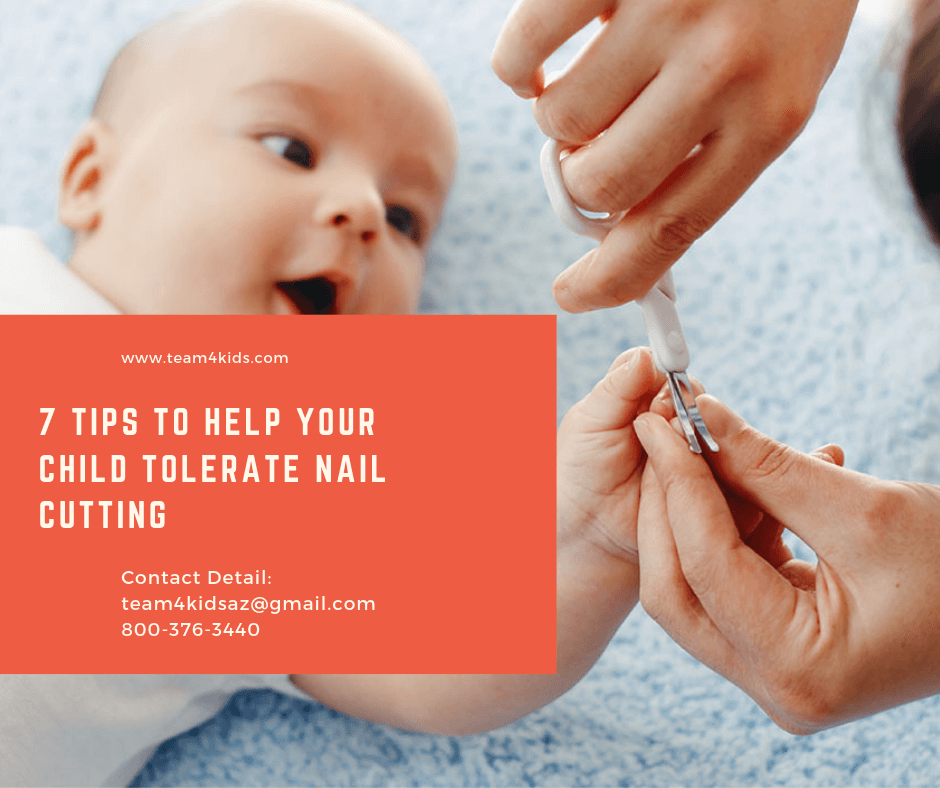Does your child have extreme meltdowns while cutting nails? Occupational Therapists can address tolerance for nail trims on children’s finger and toenails. When kids have an aversion to nail cutting, it typically results in running away, crying, screaming or even aggressiveness to avoid the task. Below are some helpful tips that can be used to accomplish nail cutting!
Why does my child hate having their fingernails cut?
They could have a sensory sensitivity or a tactile defensiveness to cutting their nails. Nail trimming could be an overwhelming sensation for someone who interprets their senses differently. Some other signs of tactile defensiveness include aversion to tags on clothing, aversion to brushing their hair, an inability to handle messy textures on their hands, distress during haircuts or difficulty tolerating a diaper change. If your child is showing this sign of tactile defensiveness, an occupational therapist can evaluate and help to further address these concerns.
- Timing is important
Try cutting your child’s nails when they are relaxed. This can be before bed or nap time, while watching a movie, during cuddles etc..
- Dull the sensation
If you apply pressure to the bottom of the nail bed while cutting, it can help to dull the sensation at the top of the nail while trimming. It can also be helpful to cut nails after bath time or water play since nails are softer after being soaked in water.
- Play with fingernail clippers!
Make it fun! Place tape around figurines hands to mimic “nails” and have them watch you trim their favorite toy’s nails. Once they are able to watch you trim their nails, let them try! You can also clip pieces of paper, play dough, or use fingernail clippers to dig in sand/bean boxes!
4.Grading tolerance
Occupational therapists will sometimes use an approach called desensitization where they have the child tolerate nail clipping in small doses at a time. For instance, have the child tolerate the nail clippers on the table during play. Then, once that is mastered have the child touch the clippers. Then, have the child bring the clippers to the adult’s nail. Then, have the child tolerate the clippers touching their own nail. Finally progressing into cutting one nail, two nails and so on until cutting all nails is mastered.
5. Use a token chart
Have the child work for a reward! Use a sticker chart for accomplishing small tasks. Every time your child tolerates clipping even one nail, give them a sticker. Once they earn 3 stickers, allow the child to pick a prize. This will help the child associate fingernail clipping with a positive experience and make it more tolerable!
6.Sensory Prep
Give your child proprioceptive input before nail trimming to help calm them. Some examples of this that can be done in the home include providing vibration, deep squeezes to the arms or legs, climbing, pushing or pulling activities.
7.Distraction
Try letting your child complete activities they love during fingernail clipping! Let them watch movies, listen to music, or play with their favorite toy. Use a “first/then” format throughout by pairing the non-preferred activity of clipping nails with a preferred activity immediately following. For instance, “first we clip, then we listen to music for each nail”.
For additional help or consultation contact T.E.A.M. 4 Kids for an occupational therapy evaluation at our Peoria or Surprise location to further your child’s success with nail trims!
Kate Archer M.S. OTR/L


